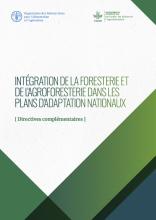Land Library
Welcome to the Land Portal Library. Explore our vast collection of open-access resources (over 74,000) including reports, journal articles, research papers, peer-reviewed publications, legal documents, videos and much more.
/ library resources
Showing items 1 through 9 of 56.Land-based mitigation technologies and practices (LMTs) reduce GHG emissions associated with land use and/or
Cette publication vise à fournir des conseils techniques sur l'intégration des forêts, de l'agroforesterie et des arbres dans la formulation et l'implémentation des Plans d'Adaptation Nationaux.
Non-technical summaryUntil the past half-century, all agriculture and land management was framed by local institutions strong in social capital. But neoliberal forms of development came to undermine existing structures, thus reducing sustainability and equity.
Urban development and species invasion are two major global threats to biodiversity. These threats often co-occur, as developed areas are more prone to species invasion. However, few empirical studies have tested if both factors affect biodiversity in similar ways.
Most current research on land-use intensification addresses its potential to either threaten biodiversity or to boost agricultural production. However, little is known about the simultaneous effects of intensification on biodiversity and yield.
In order to meet future food demand while sustainably managing available land and water resources, irrigated agriculture in semi-arid regions needs to adapt as a response to climate and socio-economic change.
This paper provides details of soil and water conservation (SWC) investments in Ethiopia over the past 20 years. It presents SWC practices and estimates the level of SWC investments in different regions. The paper focuses on four principal agricultural regions: Amhara, Oromia, SNNPR and Tigray.
Cropland expansion threatens biodiversity by driving habitat loss and impacts carbon storage through loss of biomass and soil carbon (C).
In Indonesia, land cover change for agriculture and mining is threatening tropical forests, biodiversity and ecosystem services. However, land cover change is highly dynamic and complex and varies over time and space.



